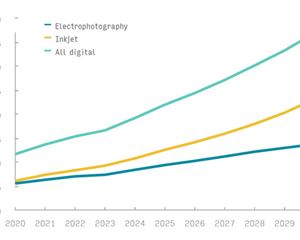To cater to the growing printing and packaging demands, an effective ERP system can ramp up productivity and quality. Vinod Nawab, director, ParamERP Solutions India, shares his take on ERP
While travelling across India, I cast an eye across every printing and packaging set-up, and observe them through the lenses of the governing authorities. What I see is that everyone is aiming for quality, and producing prints on machines with similar configurations. The increase in demands has led to advancement in production and competition. A growth in the printing industry is acquired either by circulation of jobs, continuous running of machines, total output of the day or by an advanced overture parallel to the ‘five-S’.
The former is a traditional way to escalate output, whereas, the latter is lucrative work-flow. The ‘five-S’ provides an in-depth control to refrain the system. These ‘five-S’ are acronym for Sort, Speed, System, Sequence, and Satisfaction. On assimilating these ‘S’ into a business, it gives a new definition to print, that is sprint, a roaring success to print.
Sorting: Moderating the first point, the printing industry is customary to quality production that upholds a level in the market. But to be highlighted in the market, it is equally necessary to sort before distribution. Sorting helps keep the products assembled, as well as distinguished, which lets the users effectively manage the industry.
Speed: The second thing concentrates on a constant change, which is a benefit for any industry across the world. In the printing industry, a constant running of machine at higher speed is what ails you. Hence, full speed is substantiated by creating a complete set-up and by incorporating inputs of high standards to maximise the betterment of output.
System: A lot of managing a set-up and staff is about adopting a system. Everything that works in a system is less prone to failure. A system oversees and runs interference for the forthcoming issues, and therefore, acts as a long-term insurance to one’s industry. It is generated to advance the performance of a task through a pre-defined standard profile and path.
Sequence: Subsequent steps of a process if programmed in a sequence will undoubtedly result in remuneration. Be it meeting the demands of a customer, judging the loads on a machine and planning the utilisation of its capacity. All of this, if enrolled in a sequence will benefit the process.
Satisfaction: Innovation must come from grassroots, from the people who work in our industry, because they know what works and what doesn’t. It is important to satisfy the workers, who work hard to accomplish a goal, and the end users with exclusive requirements. It is a give and take action, you satisfy the individuals and they will put their best to help you succeed.












 See All
See All